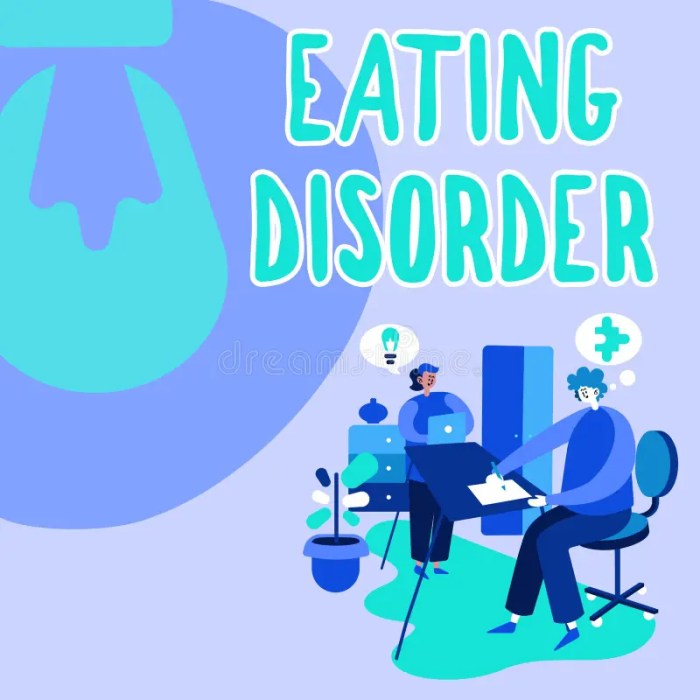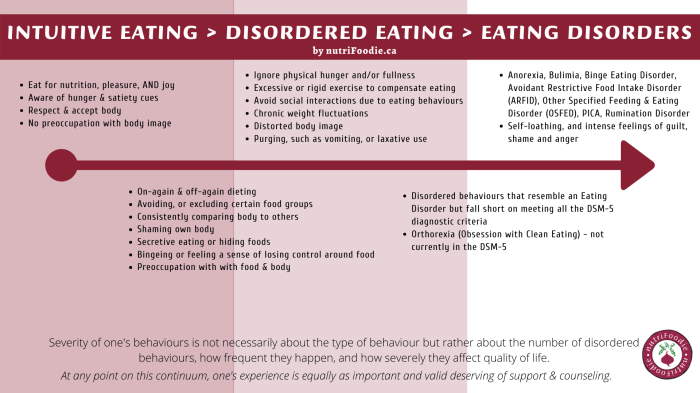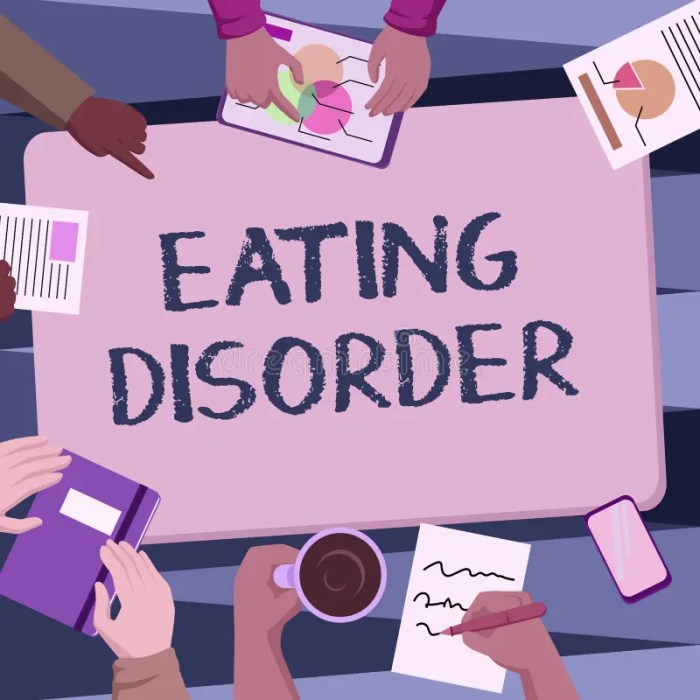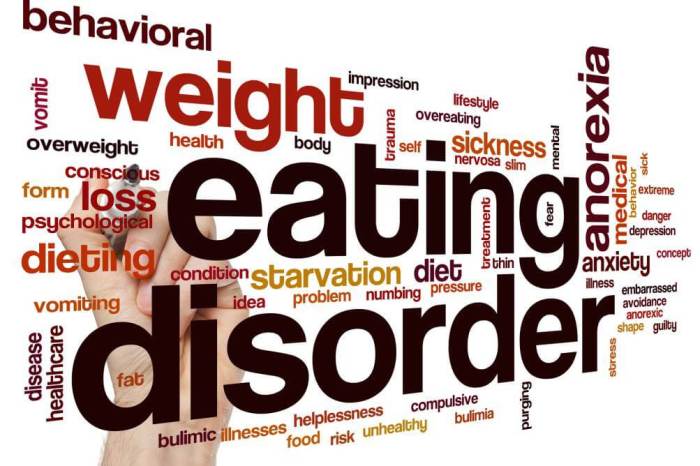Which statement best summarizes characteristics of eating disorders – Delving into the complexities of eating disorders, this comprehensive analysis sheds light on the multifaceted nature of these conditions. From their psychological underpinnings to their devastating physical consequences, this exploration unravels the intricate tapestry of eating disorders, providing a nuanced understanding of their impact on individuals and society.
Eating disorders are characterized by persistent disturbances in eating behavior, often accompanied by an intense preoccupation with weight, shape, and food. These disorders manifest in various forms, including anorexia nervosa, bulimia nervosa, and binge-eating disorder, each with its unique set of symptoms and health implications.
1. Definition and Overview

Eating disorders are serious mental illnesses that involve a disturbance in eating behavior. They are characterized by an unhealthy obsession with weight, food, and body image, leading to extreme and unhealthy eating patterns.
There are different types of eating disorders, each with its own specific characteristics:
- Anorexia nervosa:Characterized by severe food restriction, weight loss, and a distorted body image.
- Bulimia nervosa:Characterized by binge eating followed by purging behaviors (e.g., vomiting, laxative use).
- Binge-eating disorder:Characterized by recurrent episodes of uncontrolled eating, followed by feelings of guilt and shame.
- Other specified feeding or eating disorder (OSFED):Includes eating disorders that do not meet the full criteria for anorexia, bulimia, or binge-eating disorder.
2. Psychological and Emotional Characteristics

Eating disorders are often associated with psychological and emotional factors, including:
- Low self-esteem and body dissatisfaction
- Anxiety and depression
- Obsessive-compulsive tendencies
- Perfectionism
- Emotional dysregulation
- Trauma or abuse
3. Physical Health Consequences
Eating disorders can have severe physical health consequences, including:
- Malnutrition and weight loss
- Dehydration and electrolyte imbalances
- Cardiovascular problems (e.g., heart arrhythmias)
- Gastrointestinal problems (e.g., constipation, diarrhea)
- Dental problems (e.g., tooth decay, erosion)
- Bone loss and osteoporosis
- Increased risk of chronic diseases (e.g., diabetes, heart disease)
4. Social and Interpersonal Impacts

Eating disorders can significantly impact social and interpersonal relationships:
- Isolation and withdrawal from friends and family
- Difficulty concentrating and performing in school or at work
- Relationship problems and conflict
- Stigma and discrimination
5. Treatment and Recovery: Which Statement Best Summarizes Characteristics Of Eating Disorders

Treatment for eating disorders typically involves a multidisciplinary approach, including:
- Psychotherapy (e.g., cognitive behavioral therapy, family therapy)
- Medical treatment (e.g., nutrition counseling, medication)
- Support groups
Early intervention and comprehensive care are crucial for successful recovery.
6. Prevention and Awareness
Preventing eating disorders involves:
- Promoting body positivity and healthy body image
- Educating about eating disorders and their risks
- Encouraging media literacy to challenge unrealistic body ideals
- Supporting individuals struggling with eating disorders
Q&A
What are the common characteristics of eating disorders?
Eating disorders are typically characterized by disturbances in eating behavior, preoccupation with weight and shape, and a distorted body image.
What are the different types of eating disorders?
The main types of eating disorders include anorexia nervosa, bulimia nervosa, and binge-eating disorder.
What are the physical health consequences of eating disorders?
Eating disorders can lead to malnutrition, dehydration, electrolyte imbalances, and various other physical health complications.